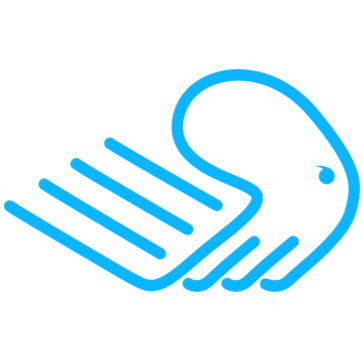
Create Websites with CHEETAH
Create your own blog (3)
„Connect“ blog with website
If you click on the "Connect" menu item, all websites currently available in the "Cheetah" editor will be displayed on the right-hand side. Here you can now explicitly select the website (in our example "Naturwunder") that you want to connect to the blog you just created. To do this, click the "Connect" button on the corresponding website tile.
Note: Here you are offered the selection of a template. We select here "as a beginner" the predefined (and not the empty) template.
The website tile can now be found in the "Connected Websites" section of the view (i.e. at the top).
Now you need to switch back to the Website view of the "Cheetah" editor and open the "Naturwunder" website there (in our example). As you can see, two new pages marked "Blog" have now been automatically added to your website. You will also find the two pages (analogous to "Member Areas") listed once again in the "Blog Pages" section:
One side is called the "blog feed" and the other side is called the "blog post". The "feed" is more or less the overview page of the blog. Here, all blog posts will later be listed briefly in their chronological order. The "detailed view" of a blog post is then the "blog post".
Both pages (which are not empty due to the fact that we have selected a template when "connecting") we now have to adapt design-wise and functionally to our ideas. "Cheetah" provides a number of special elements for this purpose, which can also be explicitly dragged from the element selection into the editor.
Note: Before you start designing the blog web pages, you should write two more blog posts for testing purposes.
Design “Feed Page“
This page is used to display your posts in a kind of "preview". The preview area always contains a "Read More..." button. ("Read More"), which then branches to the detailed view ("Post Page"). If the post contains a thumbnail, then clicking on it will also take you to the linked post page.
If you use the default feed template - as in this example - then the web page will contain two specific blog elements: a "Blog News Slider" type element at the top, and a ribbon with a "Posts" element below it. You can customize these elements as usual, delete them or replace them with others (from the elements selection - category "Blog General" or "Blog FeedNews").
Tip: First familiarize yourself with the many setting options of these two elements with a focus on the Post element.
Blogs news slider
To configure this element, click the gear icon ("blog-news-settings") in its header menu. In the dialog box that appears, you can specify how many news items the slider should include and whether the title of the post or part of the description should be displayed in addition to the thumbnail or not. If you activate "Redirect Post", a mouse click on a slider image will immediately display the corresponding article in the post view.
Posts
This element also has a gear icon in its header menu. Here you can, among other things, select a special design variant of the feed via the "Theme" drop-down box. Furthermore, you can define how many news items are to be listed, which display elements are to be shown, as well as the date format and the text of the button. The actual design is then done via the many properties of the element itself (margin menu or right mouse button).
Furthermore, you can - for example under the slider - still include a search function (full text search). You can find such a special element in the element category "Blog General". If you later enter a search term or phrase in this search field, then all pos-tings that contain this search term or phrase somewhere in the text will be listed in the feed.
In the same way, it makes sense to equip the blog with an RSS feed (elements category "Blog General"). Simply position the element on the web page (e.g. the header), possibly adjust size and appearance (property "Theme") - and that's it.
Sometimes you want to show specific feeds at the end of the blog window - e.g. those that have been viewed most often. For this purpose, there are post elements available for selection in the "Blog Groups" element category. They differ from an ordinary feed post element by special topic filters, which are accessible via the header menu (gear icon).